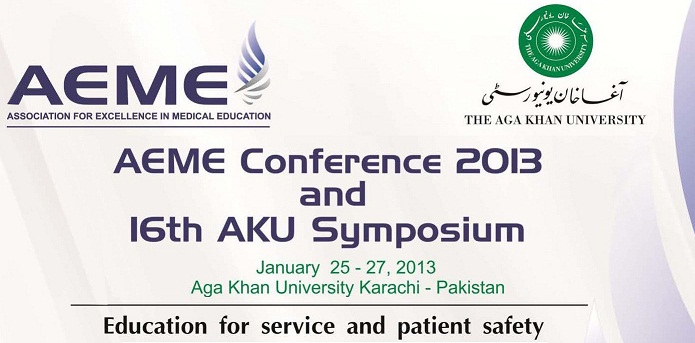Day 1 : Oral Presentations (Theme: Patient Safety)
Enhancing patients safety by minimizing window period donations
Location
Lecture Hall 2
Start Date
26-1-2013 4:00 PM
Abstract
Background: The frequency of viral hepatitis B and C is estimated to be 3-4% in Pakistani blood donors while HIV is <1%. However no data is available regarding blood donations that are made during window period. Such donations though serologically negative are potentially infectious because of the substantial viral load. This also has an impact on donor as he being asymptomatic and serologically negative will remain in the blood donor pool. The current study was done to estimate the extent of such blood donations that were made during the gap before sero-conversion.
Objective: To determine the frequency of window period blood donations for estimating NAT-yield in Southern Pakistan
Methods: All donors were initially scanned verbally to assess their suitability for donation using an in house questionnaire. We collected two 5ml blood in gel tube (BD vacutainer) from each donor. Each donation was screened for HIV, Hepatitis B and C [Vitros Johnson & Johnson, ortho- clinical and diagnostic 1996-2000], malaria [Now malaria® Binax incorporated] and syphilis [VDRL Carbon antigen Plasmatec Laboratory products]. Serologically negative donors were evaluated further through nucleic acid testing [TaqScreen MPX Assay, Roche Diagnostics] in a pool of six samples. The data from April 2011 to November 2012 was compiled from blood bank information system to compute the results.
Results: During the study period 48225 blood donations were made. There were 1832 sero-positive samples [3.8%] including: HbsAg [n=661], HCV [n=817], HIV [n=35], VDRL [n=284] and ICT malaria [n= 35]. Serologically non-reactive blood samples were tested for nucleic acid [n=46393] and a total of 34 cases were positive. Further analysis showed HCV and HBV in 20 [58.8%] and 8 [23.5%] cases respectively. Three samples could not be resolved because of insufficient samples while three await confirmation for HIV. NAT yield was computed as 1:1400 donations showing that one of every 1400 blood donations was made during the window period. Theoretically, 102 patients were saved from transfusion transmitted viral infections through this strategy.
Conclusions: Nucleic acid testing in Pakistani donors yielded high positivity rate with majority of the window period donations reflecting pre-seroconversion phase of hepatitis C. For safe blood transfusion, viral genomic testing is essential in our country.
Key words: Blood donors, donations, Pakistan, Nucleic acid testing
Enhancing patients safety by minimizing window period donations
Lecture Hall 2
Background: The frequency of viral hepatitis B and C is estimated to be 3-4% in Pakistani blood donors while HIV is <1%. However no data is available regarding blood donations that are made during window period. Such donations though serologically negative are potentially infectious because of the substantial viral load. This also has an impact on donor as he being asymptomatic and serologically negative will remain in the blood donor pool. The current study was done to estimate the extent of such blood donations that were made during the gap before sero-conversion.
Objective: To determine the frequency of window period blood donations for estimating NAT-yield in Southern Pakistan
Methods: All donors were initially scanned verbally to assess their suitability for donation using an in house questionnaire. We collected two 5ml blood in gel tube (BD vacutainer) from each donor. Each donation was screened for HIV, Hepatitis B and C [Vitros Johnson & Johnson, ortho- clinical and diagnostic 1996-2000], malaria [Now malaria® Binax incorporated] and syphilis [VDRL Carbon antigen Plasmatec Laboratory products]. Serologically negative donors were evaluated further through nucleic acid testing [TaqScreen MPX Assay, Roche Diagnostics] in a pool of six samples. The data from April 2011 to November 2012 was compiled from blood bank information system to compute the results.
Results: During the study period 48225 blood donations were made. There were 1832 sero-positive samples [3.8%] including: HbsAg [n=661], HCV [n=817], HIV [n=35], VDRL [n=284] and ICT malaria [n= 35]. Serologically non-reactive blood samples were tested for nucleic acid [n=46393] and a total of 34 cases were positive. Further analysis showed HCV and HBV in 20 [58.8%] and 8 [23.5%] cases respectively. Three samples could not be resolved because of insufficient samples while three await confirmation for HIV. NAT yield was computed as 1:1400 donations showing that one of every 1400 blood donations was made during the window period. Theoretically, 102 patients were saved from transfusion transmitted viral infections through this strategy.
Conclusions: Nucleic acid testing in Pakistani donors yielded high positivity rate with majority of the window period donations reflecting pre-seroconversion phase of hepatitis C. For safe blood transfusion, viral genomic testing is essential in our country.
Key words: Blood donors, donations, Pakistan, Nucleic acid testing

